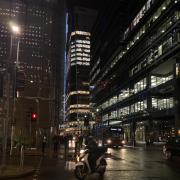
Many of us may be guilty of spending too much money on our clothes, and occasionally indulging in retail therapy, but is society aware of how their purchases are impacting the environment and the people that make their clothes, on the other side of the world?
Fast fashion is defined as ‘inexpensive clothing produced rapidly by mass-market retailers in response to the latest trends.’ The trends you see celebrities flaunting over social media are often copied by other brands, at a much more affordable price.
While this may seem like a great deal, the reality is that these clothes will be mass produced and made with cheap materials, often by extremely poorly paid workers in foreign countries, and then sold to the many customers wanting to partake in the latest trend.
These clothes and accessories are usually thrown away after the consumer quickly loses interest in it, or the item develops a hole or stain.
The environmental impact of fast fashion is immense, as it has an extremely negative impact through water pollution, textile waste, and the toxic chemicals used to make fabrics. For example, it takes around 1,800 gallons of water to produce just one pair of jeans (according to Treehugger).
While a large number of fashion companies are taking near to no steps to reduce their negative environmental impact, some are making progress towards producing sustainable fashion. H and M is one of these companies. In their 2018 sustainability report, they expressed; “95% of cotton used by H and M group is recycled or other sustainably sourced.”
Too many of us seem to be blissfully unaware of what our purchases are doing to the world. When filming a documentary about fast fashion, Stacey Dooley mentioned; “I feel like we understand what plastic does to the Earth but I had no idea what cotton was capable of”. She believes that, as a society, we need to start acknowledging these issues surrounding fashion.
After all, the choices we make towards the environment now will impact the world we live in in the future.



























